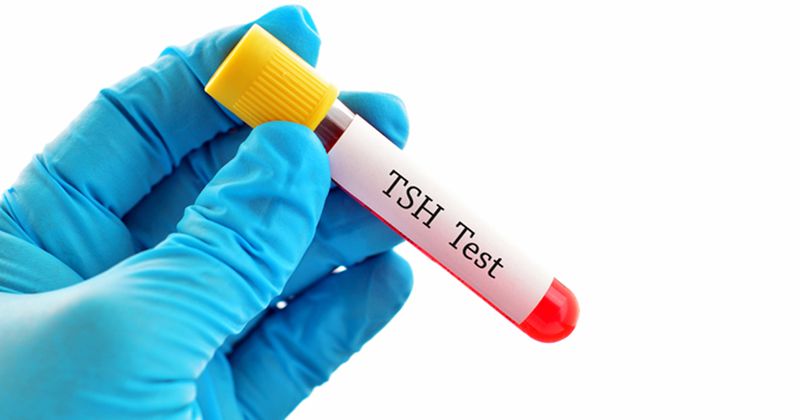TSH variations in pregnancy could prompt erroneous subclinical thyroid disease diagnosis
Physiologic variations in thyroid-stimulating hormone concentrations may lead to a misclassification of subclinical thyroid disease for some healthy pregnant women, possibly subjecting women to unnecessary treatment, researchers report.
TSH is secreted in a pulsatile manner, and nocturnal TSH concentrations may be twice as high as during the day, Andrzej Lewinski, MD, PhD, professor in the department of endocrinology and metabolic diseases at the Medical University of Lodz, Rzgowska, Poland, and colleagues wrote in Clinical Endocrinology. Additionally, TSH pulse amplitude appears to be increased in nonthyroidal illness.

“Any decisions to instigate treatment, particularly during such a sensitive period like pregnancy, should be based on clear data that define what TSH and thyroid hormone concentrations are abnormal, as well as evidence of definite benefit of treatment,” Lewinski and colleagues wrote. “Furthermore, assessment of thyroid function should be performed during the first trimester of pregnancy, as fetal development is then almost entirely dependent on maternal thyroid hormone concentrations. In such circumstances, it is mandatory to ascertain that one is dealing with a genuine abnormality and not with physiological variations in hormone concentrations.”
Lewinski and colleagues analyzed data from 110 healthy pregnant women (mean age, 30 years; mean BMI, 24.9 kg/m²; mean gestational age, 9.9 weeks), hospitalized at Polish Mother’s Memorial Hospital Research Institute between 2017 and 2019, as well as 19 nonpregnant healthy women (mean age, 29 years; mean BMI, 28.3 kg/m²). Researchers assessed baseline concentrations of free thyroxine, free triiodothyronine, and titers of thyroid peroxidase (TPO) antibodies, thyroglobulin antibodies, and TSH receptor antibodies, as well as TSH concentrations at 30-minute intervals between 7 and 9 a.m.
“We have deliberately chosen the hours between 7 and 9 a.m., as this is the time, where blood samples are taken in real-life conditions,” the researchers wrote.
Based on data from 550 measurements, researchers found that mean TSH concentrations were 1.62 mIU/L and 1.67 mIU/L among pregnant women and controls, respectively. Women who were TPO antibody-positive had a higher TSH concentration vs. women who were TPO antibody-negative (mean TSH, 3.17 mIU/L vs. 1.62 mIU/L; P = .0108).
Taking into account the highest TSH out of five consecutive measurements, researchers found that 20.9% of pregnant women had a TSH measurement greater than 2.5 mIU/L and 9.1% of pregnant women had a TSH measurement greater than 4 mIU/L.
When considering the lowest TSH value, researchers observed TSH measurements greater than 2.5 mIU/L in 12.7% of pregnant women and TSH measurements greater than 4 mIU/L in 3.6% of pregnant women.
Researchers found that the discrepancy was even greater for women who were TPO antibody-negative, varying between 21.2% vs. 8.1% for a TSH greater than 2.5 mIU/L when considering the highest vs. the lowest TSH values, and varying between 6.06% vs. 1.01% for a TSH greater than 4 mIU/L when considering the highest vs. the lowest TSH values.
“Furthermore, either six (5.4%) or 10 (9.1%) women had TSH concentrations below 0.1 mIU/L,” the researchers wrote.
Researchers also found that TSH concentrations varied by 39.5% for pregnant women and by 42.47% among controls, with no between-group difference.
“Our study clearly demonstrates that regardless of the ‘cutoff point’ defining subclinical thyroid dysfunction, a significant number of woman might be labeled as having some form of ‘thyroid disease,’ purely as a result of physiological variation in TSH concentrations,” the researchers wrote. “This discrepancy is less striking for subclinical hyperthyroidism, but is highly pronounced for otherwise healthy pregnant women, who might be labeled as having ‘subclinical hypothyroidism.’ Hence, in aTPO-negative women, without previous history of thyroid disease, the prevalence of ‘subclinical hypothyroidism’ would vary from about 21% to 8% for a TSH 2.5 mIU/L cutoff.”
The researchers noted that a diagnosis of subclinical thyroid dysfunction in pregnancy should not be based on a single measurement, although the number of tests remains yet to be optimized.


